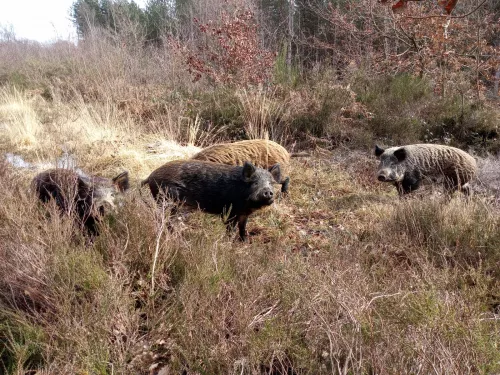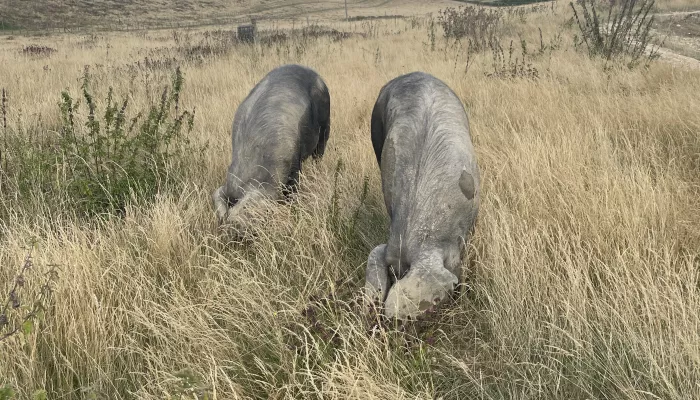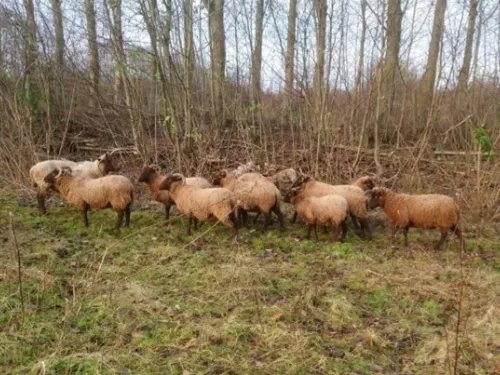
Iron-Age Pigs
These pigs are as close as you can get to the wild boar and also, despite being a domesticated version of this wild species, share many of its traits.

This pig breed is becoming popular with smallholders and free range farmers. Despite their large size, large black pigs are often friendly and placid.
This pig breed is becoming popular with smallholders and free range farmers. Despite their large size, these pigs are often friendly and placid.
These pigs have floppy ears which means their eyesight is limited but their hearing and sense of smell is very good. Their black skin protects them from sunburn. After spending winters outside, they develop a rough covering of coarse black hairs.
This breed grazes more than some of its counterparts, and they tend not to challenge fences when kept in big enough areas. They 'rootle' through the autumn and winter months, seeking out grubs and tubers. In the spring, these rootled areas become home to many rare plants, providing feeding areas for farmland birds such as skylarks and turtle doves.
In the hot months, large black pigs wallow in shallow pools of water, keeping cool with the wet mud. The shallow watery scrapes they produce are perfect places for birds to feed and bathe, and create new edges for pond weeds to establish in. These pigs have sharp teeth and strong jaws capable of crushing bone so are best treated with a healthy amount of respect.

These pigs are as close as you can get to the wild boar and also, despite being a domesticated version of this wild species, share many of its traits.

A small cow, tough and hardy with short pointy horns.

A striking unusual milky coffee coloured-sheep, often with four horns and sometimes as many as six. This primitive breed is originally from the Isle of Man. Their fleece self-sheds but they can also be shorn.